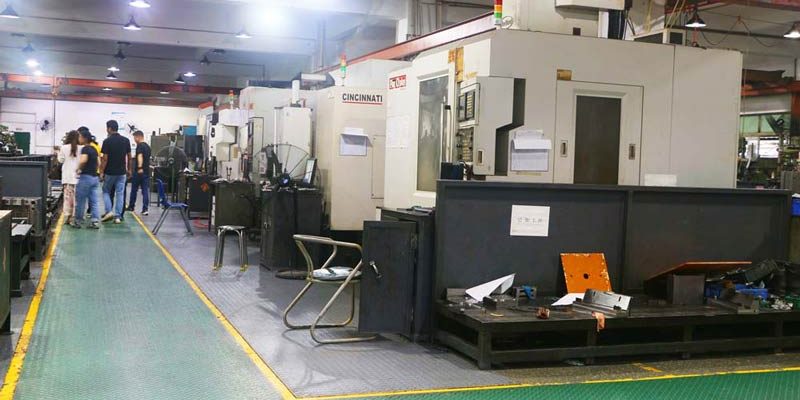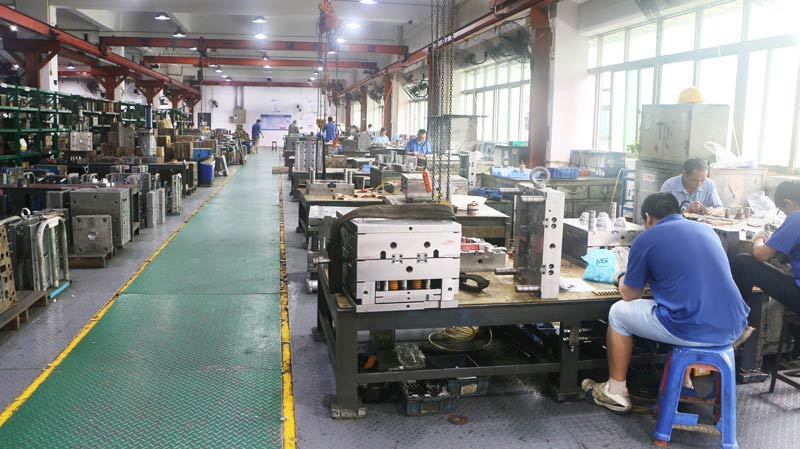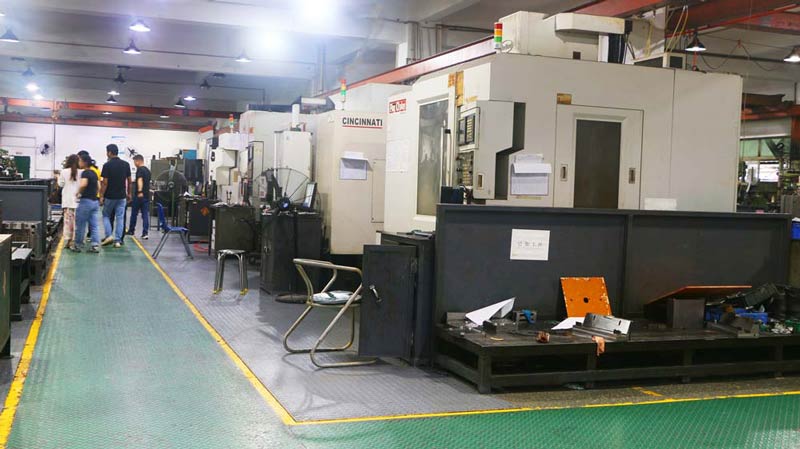Do You Know the Application of New Technologies in Injection Molding?
The application of new technologies in injection molding processing, as stated by 2F Prototypes, indicates that with the increasingly widespread application of plastic injection molding products and the rapid development of plastic molding processes, the demand for plastic products is also growing. In recent years, scientists and engineers in the field of plastic molding have conducted in-depth discussions, research, and practices on how to expand the application scope of injection molding, shorten the molding cycle of injection molding processing, reduce molding defects, improve the quality of molded plastic parts, and reduce production costs. Favorable results have been achieved, with new technologies in molds and new processes in injection molding emerging endlessly. Here, we will only introduce the increasingly widely used technologies such as thermosetting plastic injection molding, gas-assisted injection molding, precision injection molding, low-foam injection molding, co-injection molding, venting injection molding, and reactive injection molding.
I. Overview of Thermosetting Plastic Injection Molding Process
The application of new technologies in injection molding processing, although the principles and processes of injection molding of thermosetting and thermoplastic plastics have many similarities, there are significant differences between the two due to their different chemical properties. The principle of thermosetting plastic injection molding is to feed the molding material from the hopper of the injection machine into the barrel, heat it, and melt it under the rotation of the screw to make it a uniform viscous molten state. It is then injected into the high-temperature mold cavity through the nozzle at the front end of the barrel at a high flow rate under the high pressure of the screw. After a period of pressure holding, compaction, and cross-linking reaction, it solidifies and forms the shape of the plastic part, and then the mold is opened to take out the part. Obviously, from a theoretical point of view, the main difference between the injection molding of thermosetting and thermoplastic plastics lies in the solidification and molding stage after the molten material is injected into the mold. The solidification of thermoplastic injection molded parts is basically a physical process of transition from a high-temperature liquid phase to a low-temperature solid phase, while the solidification of thermosetting injection molded parts must rely on cross-linking chemical reactions under high temperature and pressure. It is this difference that leads to different injection molding process conditions between the two.
(One) Temperature
(1) Material temperature: Similar to the thermoplastic injection molding process, the material temperature includes the plasticizing temperature and injection temperature, which are determined by the temperatures of the barrel and nozzle. However, due to the different nature of the thermosetting and thermoplastic injection molding processes, there are differences in the temperature requirements for the barrel and nozzle between the two. For thermosetting plastics, in order to prevent the premature hardening of the melt in the barrel and take into account that the temperature of the barrel has less influence on plasticization than the shear friction inside the material, the tendency is to choose a lower temperature for the barrel. However, when the barrel temperature is too low, the material melts slowly, and there will be a lot of frictional heat between the screw and the raw material, which will make the melt more prone to early hardening than when the barrel is at a higher temperature. Therefore, strict control of the barrel temperature should be carried out during production. Usually, the temperature of the barrel is set in two or three stages. When set in two stages, for different materials, the temperature of the rear section can be selected within 2070°C, while the front section is within 7095°C. Additionally, the temperature of the nozzle should also be considered. Generally, the temperature of the nozzle is set higher than the barrel temperature to ensure good flowability of the melt and to approach the critical value of the hardening temperature. For different materials, the temperature of the nozzle can be selected and controlled within 75100°C. At this temperature, the temperature of the melt can reach 100130°C after passing through the nozzle, which may meet the above two requirements.
(2) Mold temperature: The mold temperature is a key factor affecting the solidification and molding of thermosetting plastic parts, directly related to the quality of molding and the efficiency of production. When the mold temperature is too low, the solidification time is long, while when the mold temperature is too high, it is difficult to discharge low-molecular-weight volatile gases due to the rapid solidification speed, resulting in defects such as loose structure, foaming, and darkening of the color of the parts. Usually, for different materials, the selection and control range of mold temperature are 150220°C. In addition, the temperature of the moving mold sometimes needs to be 1015°C higher than that of the fixed mold, which is more conducive to the solidification and molding of the parts.
(Three) Pressure
(1) Injection Pressure and Injection Speed: Similar to the injection molding process in thermoplastic injection molding, the injection pressure and injection speed in thermosetting injection molding processes are closely related. Due to the higher viscosity and the presence of fillers in the melt, as well as the requirement for temperature rise in the melt during injection, the injection pressure is generally chosen to be higher. Depending on the material, the commonly used range for injection pressure is between 100 and 170 MPa, although some materials may have values slightly lower or higher than this range. In principle, the injection speed associated with injection pressure should also be higher, facilitating the reduction of flow filling and curing time, while also preventing premature curing of the melt in the runner and minimizing surface defects such as weld lines and flow marks. However, excessive injection speed can lead to air being trapped in the cavity and the melt, resulting in surface defects such as bubbles. Based on current production experience, the injection speed for thermosetting plastics can range from 3 to 4.5 m/min.
(2) Holding Pressure and Holding Time: Holding pressure and holding time directly affect the pressure in the cavity and the shrinkage and density of the molded parts. Currently, due to the significant improvement in the curing rate of thermosetting injection melts and the widespread use of point gates in molds, the holding pressure used is generally slightly lower than the injection pressure. The holding time is slightly reduced compared to thermoplastic injection molding but should be determined based on different materials, part thickness, and gate freezing rate. Typically, the holding time ranges from 5 to 20 seconds, with the cavity pressure for thermosetting injection molding approximately 30 to 70 MPa.
(3) Back Pressure and Screw Speed: In the injection of thermosetting plastics, the back pressure of the screw should not be too high; otherwise, the material in the screw will be subjected to long-distance compression, making injection difficult or causing premature curing of the melt. Therefore, the back pressure for injecting thermosetting plastics is generally lower than that for injecting thermoplastic plastics, ranging from 3.4 to 5.2 MPa, and can be close to zero when the screw starts. In some cases, the back pressure valve can even be relaxed, using only the frictional resistance when the injection screw retreats as back pressure. However, it should be noted that excessive back pressure may result in air being entrapped, leading to unstable metering and uneven plasticization. The screw speed associated with back pressure should also not be too high, as excessive speed can cause uneven heating of the material in the barrel, resulting in poor plasticization. Generally, the screw speed is selected within the range of 30 to 70 r/min.
(Four) Other Process Conditions
(1) Residency Time and Injection Volume of Material in the Barrel: After each injection action, a portion of the melted material that has been plasticized remains in the screw’s grooves and is not injected out. Although these melts are gradually pushed out of the barrel during subsequent injections, they are prone to crosslinking and hardening if left in the barrel for too long. This can adversely affect the quality of the molded parts and even cause the injection machine to malfunction. Therefore, it is necessary to control the residence time of thermosetting plastics in the barrel. The residence time of the material in the barrel is related to the injection volume and the molding cycle time, but it must not exceed the allowable plasticization time of the material, as premature hardening may occur in the barrel. It is often necessary to perform empty injections during production to prevent premature hardening of the material in the barrel, which inevitably leads to significant waste of raw materials.
(2) Venting: Venting is crucial for thermosetting injection molding because a large amount of reaction gas is evolved during curing. In addition to designing appropriate venting systems in the mold, it is necessary to consider whether pressure relief and gas release measures are required during injection molding operations. Typically, this measure is necessary for thick-walled parts, with the pressure relief and gas release time controlled to 0.2 seconds.
(3) Typical Process Conditions for Thermosetting Injection Materials: While the general process conditions for thermosetting injection molding have been outlined, Dongguan Machining Factory has listed typical injection molding process conditions for nine types of thermosetting plastics for reference in production. However, it should be noted that thermosetting injection molding processes are still in the developmental stage, and improvements in injection molding processes will continue. Moreover, the injection molding process conditions for the same plastic may vary due to differences in grades, parts, or manufacturers.



